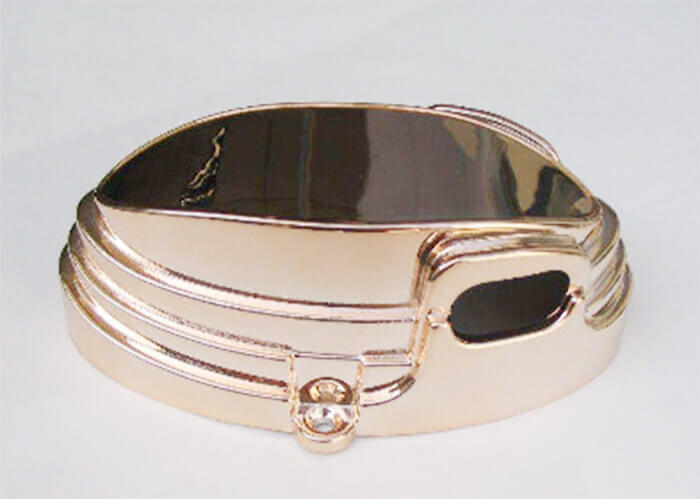After reading this How to solve lusterless injection-molded plastic parts article. You will learn about what are lusterless injection-molded plastic parts and how to solve this problem.
What are lusterless injection-molded plastic parts?
The surface of the injection-molded plastic part is dull or non-uniform in gloss, which is called dark, poor luster, or lusterless injection-molded plastic parts.
What does lusterless mean?
Lusterless means that the surface is dim and dull with poor luster, transparent products are less transparent. There are many reasons for injection-molded plastic parts’ lusterless, but other injection defects are also causes of poor luster.
How to solve the lusterless injection-molded plastic parts’ defects?
1. Mold failure
Since the surface of the lusterless injection-molded plastic parts is a reproduction of the surface of the mold cavity if the surface of the mold has surface defects such as scratches, corrosion, or micropores, it will be reflected on the surface of the plastic part and its gloss will be reduced. If the surface of the cavity is oily, damp, with an excessive amount of mold release agent, or improper selection, the surface of the plastic part will also be darkened.
Therefore, the surface of the mold cavity must be of a good finish and is best polished or surface chrome-plated. The surface of the cavity should be kept clean and oil and water stains should be removed in time. The type and amount of release agent must be appropriate.
The mold temperature also greatly affects the surface quality of plastic parts. In general, there is a big difference in surface gloss depending on the type of plastic and the mold temperature conditions.
If the mold temperature is too high or too low, the gloss will decrease. If the mold temperature is too low, the molten resin will solidify immediately after contact with the mold cavity, reducing the reproducibility of the mold cavity surface.
The mold temperature can be raised appropriately to increase the luster. It is recommended to use hot water in the mold cooling circuit to quickly transfer the heat in the cavity and avoid extending the molding cycle. This method can also reduce residual stress during molding.
Generally, except polystyrene, ABS, and AS, the mold temperature can be controlled above 100 degrees. However, keep in mind that if the mold temperature is too high, the surface of the plastic parts will also darken.
In addition, the draft angle is too small, the section thickness changes suddenly, the ribs are too thick, the gate and runner sections are too small or suddenly change, the gate system shears too much, and the molten resin is in a turbulent state. Flowing, mold exhaust failure, etc. Mold failure affects the surface quality of plastic parts and reduces the surface gloss.
2. Improper management of the injection molding conditions
Injection speed is too fast or too slow, the injection pressure is too low, holding time is too short, booster pressure is insufficient, the cushion is too large, nozzle hole is too small, the temperature is too low, the filler dispersion performance of the fiber-reinforced plastic is too low, the exposed filler or the omnidirectional distribution of the aluminum foil-like filler, the barrel temperature is too low, the plasticization of the molten resin is insufficient, and the material supply is insufficient.
If so, the injection-molded plastic part surface will be less glossy. In this regard, you need to make adjustments to your particular situation.
If a dark area is generated near the gate or in a variable cross-section, it can be eliminated by lowering the injection rate, changing the gate position, expanding the gate area, and increasing the arc transition in the variable cross-section.
If there is a milky white thin layer on the surface of the plastic part, the injection rate can be reduced appropriately. If the dispersion performance of the filler is poor and the surface gloss is poor, switch to a resin with good fluidity or a screw with strong mixing.
3. The injection molding material does not meet the usage requirements
Raw materials that do not meet the requirements for use also reduce the surface luster of the injection plastic parts. The reasons and processing methods are as follows.
Areas where the moisture or other volatile components of the molding material are too high and the volatile components condense between the cavity wall of the injection mold and the melt during molding, reducing the surface gloss of the plastic. Ingredients need to be dried in advance. Ingredients and colorants decompose and discolor, reducing gloss. You need to choose materials and colorants that are highly heat resistant.
The fluidity of the raw material is poor, the surface of the injection plastic part is not dense, and the gloss is poor. Replace with a resin with good fluidity or use an appropriate amount of lubricant to raise the processing temperature.
Raw materials are mixed with foreign matter or incompatible materials. You need to use new material. The particle size of the raw material is not uniform. Raw materials with too large a difference in granularity should be sorted.
Crystalline resin has poor luster due to non-uniform cooling. The mold temperature and processing temperature must be controlled appropriately.
For thick plastic parts, inadequate cooling can cause the surface of the plastic part to become hairy and darkened. The solution is to put the plastic parts right away.
After removing it from the mold, it is cooled with cold water and molded with a cold press mold. The proportion of recycled material in the raw material is too high, which affects the uniform plasticization of the melt. Its dose should be reduced.
You may also be interested in the below articles.
Summary Of 50 Injection Mold Structure Operation Dynamic Diagrams
Auto Parts Stamping Die Design Concept




